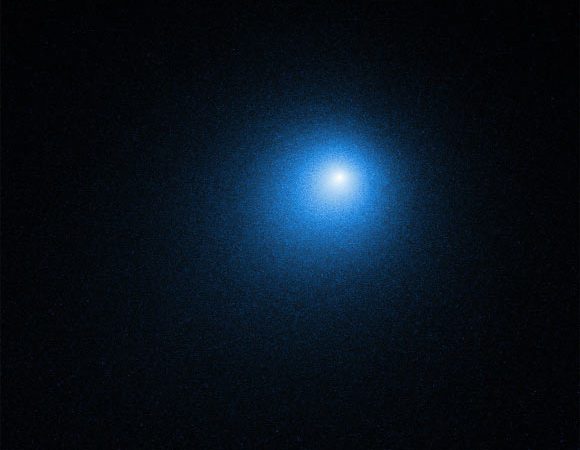Using the Near-Infrared Spectrograph (NIRSPEC) instrument at the Keck II telescope, astronomers conducted near-infrared spectroscopic observations of the hyperactive Jupiter-family comet 46P/Wirtanen during its long-anticipated close flyby to Earth in December 2018.
Source: Sci News
Discovered in January 1948 by the American astronomer Carl Wirtanen, 46P/Wirtanen is a member of the Jupiter family of comets.
With a width of 1.1 km (0.7 miles), it orbits the Sun once every 5.4 years, much quicker than the 75-year orbit of the more famous comet Halley.
Most of the comet’s passes through the inner Solar System are much farther from Earth, making its approach to Earth in 2018 particularly notable.
“Within just 10 to 20 min of observing with NIRSPEC, we obtained measurements of the abundances and spatial distributions of the comet’s chemical building blocks,” said Mohi Saki, a researcher in the Department of Physics and Astronomy at the University of Missouri-St. Louis.
“Our research would not be possible without the efforts of the entire team that completed the NIRSPEC upgrade,” added Dr. Boncho Bonev, an astronomer in the Department of Physics at American University.
“I’m so grateful for their tremendous and successful effort to complete NIRSPEC’s major upgrade under immense time pressure.”
Using the new NIRSPEC data, the astronomers detected an unusual amount of methanol (CH3OH) as well as acetylene (C2H2), ethane (C2H6), ammonia (NH3), hydrogen cyanide (HCN), formaldehyde (CH2O), and water (H2O).
“46P/Wirtanen has one of the highest alcohol-to-aldehyde ratios measured in any comet to date,” said Dr. Neil Dello Russo, a cometary scientist at the Johns Hopkins University Applied Physics Laboratory.
“This tells us information about how carbon, oxygen, and hydrogen molecules were distributed in the early Solar System where the comet formed.”
The new NIRSPEC data also revealed another strange characteristic.
Normally, as comets orbit closer to the Sun, the frozen particles in their nucleus heat up, then sublimate, going directly from solid ice to gas.
This process, called outgassing, is what produces the coma, a giant cloud of gas and dust glowing around the comet’s nucleus.
As the comet gets even closer to the Sun, solar radiation pushes some of the coma away from the comet, creating the tails.
With comet 46P/Wirtanen, however, the researchers made a strange discovery: another process beyond solar radiation is mysteriously heating up the comet.
“Interestingly, we found that the temperature measured for water gas in the coma did not decrease significantly with distance from the nucleus, which implies a heating mechanism,” said Professor Erika Gibb, chair of the Department of Physics and Astronomy at the University of Missouri-St. Louis.
According to the team, there are a couple possible explanations.
One is a chemical reaction where sunlight may be ionizing some atoms or molecules in the dense coma close to the nucleus, releasing high-velocity electrons.
When these super-charged electrons collide with another molecule, they can transfer some of their kinetic energy and heat the water gas in the coma.
Another possibility is there may be solid chunks of ice flying off of 46P/Wirtanen.
“This scenario would be consistent with observations of other hyperactive comets like 46P/Wirtanen, a class of comets that release more water than expected if they release all of their gases directly from their icy nuclei as they approach the Sun,” Professor Gibb said.
The team’s results were published in the Planetary Science Journal.
Source: Sci News

































Leave a Comment
You must be logged in to post a comment.